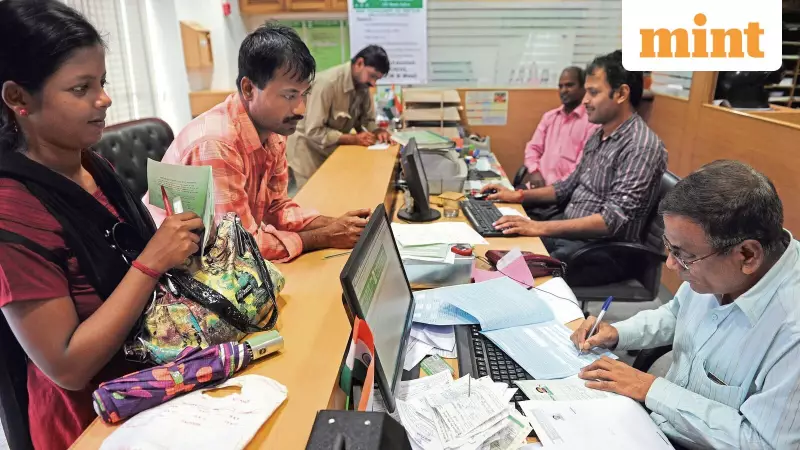
From Growth to Guardrails: NBFCs Tighten MSME Lending
India's non-banking financial companies (NBFCs) are hitting the brakes on loans to micro, small and medium enterprises (MSMEs) as rising credit risks and mounting bad debts force a strategic shift in lending practices. Major players including Bajaj Finance, IIFL Finance, Shriram Finance and Ugro Capital have all reported slowing growth in their MSME portfolios during the September quarter.
Rising Stress Forces Strategic Recalibration
The warning signs became unmistakable in recent quarterly results. Bajaj Finance saw its gross bad loan ratio in the MSME segment jump to 2.47% in the September quarter, a significant increase from 1.83% in the preceding quarter and 1.65% a year earlier. This deterioration prompted India's largest NBFC to scale back its MSME business by approximately 25%.
Rajeev Jain, managing director of Bajaj Finance, provided sobering context during an analyst call on November 10. "We've seen incipient stress across the board; it's not regional in nature," Jain stated. The company now expects its MSME book to grow only 11-12% in FY26, sharply down from its earlier projection of nearly 20%.
The pain extends across the sector. IIFL Finance reported even more severe stress, with gross bad loans in its MSME portfolio rising to 5.93% in the September quarter, compared to 5.42% in the previous quarter and just 3.10% a year ago. The company's MSME loan book stood at ₹13,474 crore at quarter-end, nearly unchanged from a year earlier but down 3% from the preceding quarter.
Multiple Factors Driving the Credit Squeeze
Industry experts point to several converging factors behind the emerging stress. Siddharth Goel, director at Fitch Ratings, identified over-leveraging as a primary concern. "Many small MSMEs borrowed from multiple NBFCs during a phase when non-bank lenders were aggressively expanding credit," Goel explained. When pockets of demand slowdown emerged, these businesses found themselves overextended.
The external environment has also turned challenging. The US imposition of hefty 50% tariffs on Indian goods has hurt production and cash flows at many export-oriented MSMEs in sectors including:
- Leather and textiles
- Chemicals
- Gems and jewellery
Credit rating agency Crisil sounded the alarm in an October report, warning that bad loans in the MSME segment "may witness a cyclical inch-up, particularly in export-oriented sub-segments hit by the US tariff."
Industry Response: Secured Lending and Tighter Underwriting
NBFCs are responding with a fundamental shift in strategy. The new approach emphasizes:
- Increased secured lending over unsecured loans
- Tighter underwriting standards and closer borrower scrutiny
- Higher provisioning for potential loan losses
Kapish Jain, chief financial officer of IIFL Finance, described maintaining a "very cautious status" on MSMEs and microfinance business, with focus largely on "recovery and collection." The company attributed its slowing MSME growth to "strategic recalibration towards low-risk secured lending and pullback from unsecured lending."
At Ugro Capital, which primarily lends to MSMEs, assets under management increased by 29% annually to ₹12,226 crore. However, founder and managing director Shachindra Nath emphasized this growth came alongside tighter underwriting and moderated disbursals. Nath characterized this as a "prudent approach" that aligns with prevailing macro headwinds in the small-ticket MSME segment.
Ugro Capital's gross NPA stood at 2.4% as of September-end, higher than 2.1% a year ago. The company reported a credit cost of 2.5% of average AUM in Q2, reflecting higher provisioning to cover potential losses.
Sector-Wide Impact and Future Outlook
The vulnerability of NBFCs to MSME stress stems from their concentrated exposure to small businesses with weak credit profiles. Reserve Bank of India data through March end shows that over 26% of NBFC loans went to small businesses with the highest credit risk, compared to 18% for private banks.
Umesh Revankar, executive vice-chairman of Shriram Finance, highlighted the specific impact of US tariffs. "We have been cautious with the MSME segment, especially post-US tariffs, because some of the segments are dependent on the US market and some of the segments have as high as 60% of their output going into the US market," he told analysts.
Despite the near-term challenges, some players remain optimistic about the future. Bajaj Finance expects the worst to be behind them by March and June, after which they anticipate returning to growth mode. The company remains confident of achieving higher growth in the segment by the first half of FY27.
As NBFCs navigate this period of adjustment, their collective shift toward a "risk-first" stance reflects broader concerns about asset quality in a segment that accounts for more than 30% of India's GDP and serves as the country's second-largest employer after agriculture.





